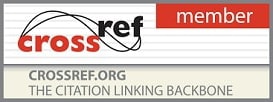Impact Factor: Impact Factor(RJIF): 5.3
International Journal of Home Science
2019, VOL. 5 ISSUE 1, PART B
Assessment of dietary habits and lifestyle patterns of overweight and obese children of a private school in Jaipur city
Author(s): Sakshi Golya and Gargi Saxena
Abstract:
Childhood obesity is a major global concern now-a-days with little evidence for effective prevention strategies. Obesity is a condition that is associated with having an excess of body fat, defined by both genetic and environmental factors. Childhood obesity is a medical condition in which weight and height does not change proportionally as the children develop. If a child or adult stores too much fat they are classified as overweight or obese. If left unchecked, these children are more likely to become obese adults.
Childhood obesity is a major global concern now-a-days with little evidence for effective prevention strategies. Obesity is a condition that is associated with having an excess of body fat, defined by both genetic and environmental factors. Childhood obesity is a medical condition in which weight and height does not change proportionally as the children develop. If a child or adult stores too much fat they are classified as overweight or obese. If left unchecked, these children are more likely to become obese adults.
Childhood obesity has emerged as an epidemic in developed countries during the last quarter of the 20th century. According to National Health and Nutrition Examination Survey, between two-third and one-half of Indian adolescents are clinically obese. This study examines the impact of dietary food habits on childhood obesity. Understanding the psychosocial consequences of obesity in target communities will enable future interventions to be appropriately designed.
The present study deals with the assessment of the dietary habits and lifestyle pattern of overweight children; a quantitative analysis of routine food items consumed by children and a qualitative analysis that explores the aspect of preferences of food and doing things in free time as chosen by children. Information was gathered 100 school children of private school. The data was collected using a structured questionnaire schedule consisting of questions related to general profile, anthropometry, dietary survey, lifestyle pattern, bio clinical examination.
The collected data reported that 27% of adolescent’s children under study fall into obese category, while 29% found to be overweight. The qualitative data was based on the preference of food items by children, heir social involvement, their knowledge on the subject of obesity, the influence of socioeconomic status and lack of physical activity could be the cause of obesity. Later it was found that the above mentioned criteria played a significant role in gaining weight of adolescent children
Pages: 82-84 | 411 Views 92 Downloads
How to cite this article:
Sakshi Golya, Gargi Saxena. Assessment of dietary habits and lifestyle patterns of overweight and obese children of a private school in Jaipur city. Int J Home Sci 2019;5(1):82-84.






